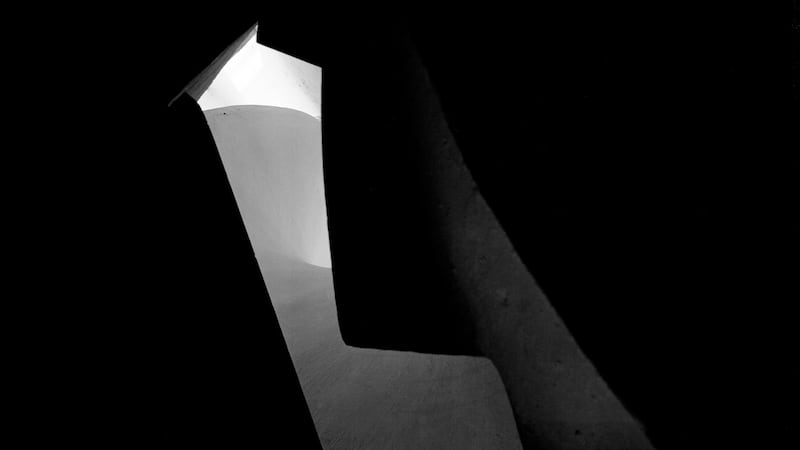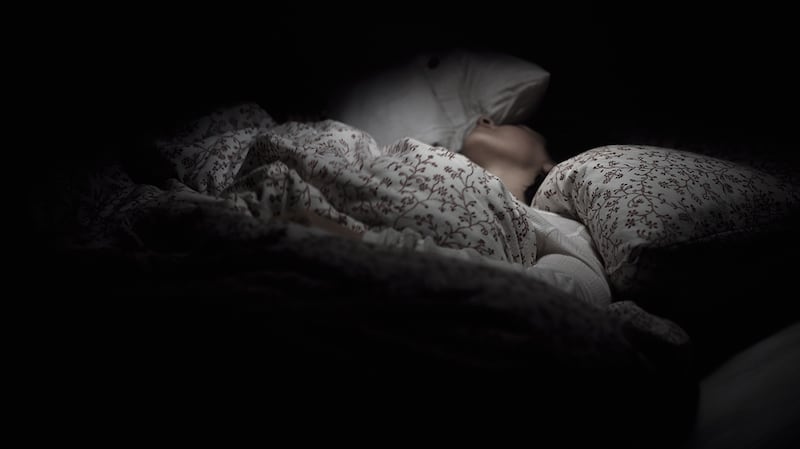Bill Lynch
Douglas Hyde Gallery (Gallery 1), Trinity College Dublin
★★★★
Bill Lynch first met Verne Dawson when both were students at New York's Cooper Union in the late 1970s. They became and remained friends. Dawson wrote that their mutual interest in myth and astronomy bound them together as they went on to follow separate paths as painters. However, Lynch never did exhibit his work. According to Dawson: "His affliction, schizophrenia, eventually made our world difficult for him to be part of." Lynch's first exhibition, organised by Dawson, is sadly posthumous – he died in 2013 at the age of 53.
Sadder still, what comes across most immediately in Lynch's paintings is concentrated vitality. They are very much alive. That initial showing, at White Columns in New York, has led to well-received shows in the Approach in London, Tanya Leighton in Berlin, and now the Douglas Hyde. (Dawson's work feature in a smaller show in Gallery 2.)


Lynch looked beyond western art. He was familiar with and influenced by Chinese painting, especially through the work of the great Zhao Shaoang (Lynch's reworking of one of his paintings is on view) and other 20th-century artists of the Lingnan School. These painters were open to ideas in western and Japanese art, and indeed anywhere else. But their aim was to fashion a modern national style in sympathy with traditional Chinese painting.
In a comparative essay on the work of Zhao and Claude Monet, Vanessa Lam pointed to the role of the void in the former's painting and the Lingnan School in general. That seems pertinent to Lynch's paintings. If you don't allow for the role of the void, his compositions can seem oddly incomplete or elliptical.
And it is relevant to another aspect of his work as well. As with some other painters, Lynch preferred working on a surface that had colour, texture and personality rather than a pristine blank canvas.
Using mostly raw plywood panels, Lynch worked with and against this void, an indeterminate space “beyond the painting”, as Lam puts it. The marks he made become subtly integrated with the background, often drawing energy from it, sometimes allowing it to play a prominent role and sometimes letting it disappear almost completely.
Untitled (Sammy Watching) – Sammy was Lynch's dog – is a sparse scaffolding of brush strokes on wood. Then, by contrast, you come upon the richness and depth of Untitled (Blue Vase).
In each case, Lynch’s judgment on what a particular piece needs is what counts. He obviously worked fast and deliberated at length, and his instinct appears sound.
- Until May 4th, douglashydegallery.com
Under Into Somewhere – Anna Rackard
Cross Gallery, Dublin, until March 26th
Eloquent Proof – Roseanne Lynch
Nag, Basement, Dublin, until April 4th
★★★★★
Sometimes certain ideas seem to be in the air. Last year, for example, composer Max Richter released an eight-hour album, Sleep. Its seamless 31-piece construction refers directly to Bach's Goldberg Variations, reputedly written to cater for the sleepless Count Kaiserling. Richter described his work as "an invitation to dream". The same could be said of Anna Rackard's project Under Into Somewhere, which she was working on while Richter was composing Sleep.
Inspired by Goya's painting of a sleeping woman, El Sueño (The Dream), Rackard set out to make photographic portraits of people as they slept. She arranged it so that the shutter of a large-format camera trained on the sleepers remained open through the night. As they slept, at a time unknown to them, a light flashed on and recorded an image.
Rackard then asked her subjects to write down, in the morning, what they could recall of their dreams. Their recollections are gathered and bound in book form. An ambient soundtrack, partly inspired by the dream records, was made by sound editor Brendan Rehill.
Rackard was fascinated by the idea of capturing an image from the unconscious otherworld of sleep – "death's other kingdom" in Eliot's phrase. She remarks that Goya's dreamer is beautiful but the image is ambiguous. Perhaps Goya is hinting that she is no longer alive. She was not there when the images were made, and the subjects could not control their aspect or appearance. Just two exposures were made in each case.
The images are ethereal and haunting, largely because of the lack of self-consciousness. They are glimpses into the other side.
Rackard, known for her outstanding series of portraits of Irish female farmers, has also worked extensively as an art director and production designer in film, television and advertising. She has made something extraordinary here.
By accident or design, Roseanne Lynch’s show is a perfect fit with Rackard’s. Her photographs can be described as sculptural. She photographs spaces as defined and shaped by architectural enclosure and the fall of light. Her prints are not heavy and concerned with technical detail. Rather, she conjures up spaces by describing the way light flows through them. Her work illuminates and enhances our perception and experience of space.
The photographs in this show come from time spent at several locations in France, including the Maison de Verre in Paris, the Camargo Foundation, Cassis, and the Villa Noailles near the city of Hyères.











